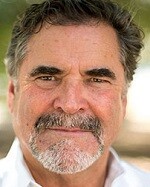By Michael Bates, Louis Desroches, SPE, Avinash Rajah, and Tonya Cosby, Intel, and Robert K. Perrons, Queensland University of Technology
The global community is committed to transitioning to green energy technologies, and there has been a lot of change in the energy domain lately as a result. Low-carbon alternatives such as wind and solar at long last have reached price points at which they are economically competitive in the marketplace, and financial institutions around the world have started deciding in large numbers to stop lending money to projects and companies associated with the fossil fuel industry. As Fig. 1 shows, the fraction of energy delivered to the market by renewable sources is now rising steeply as a result of these kinds of changes.

But this doesn’t tell the whole story. The global population is still growing, and living standards in many parts of the world continue to improve—a trend that has historically led to higher per capita rates of energy use. The coming together of these global trends has caused the overall energy consumption of the world to continue growing aggressively. A result of this growth is that, although the percentage of the world’s energy coming from renewables is growing, the absolute amount of energy delivered to the global marketplace in the form of oil and gas is also getting bigger (Fig. 2). And, from a climate-change point of view, that’s what matters. At the end of the day, the Earth’s atmosphere responds to the total number of tons of greenhouse gases that we emit rather than to how optimistic we are about a particular trend.

The confluence of these global dynamics is giving rise to an emerging truth that resonated clearly in the International Energy Agency’s most recent World Energy Outlook. Even though many people are rooting for the success and widespread market penetration of renewable energy sources, “it is too soon to see a rapid decline of oil.” This realization carries with it a some sober perspective about what needs to be done right now in our attempts at mitigating climate change: “Avoiding new emissions is not enough: If nothing is done about emissions from existing infrastructure, climate goals are surely out of reach.” In other words, in tandem with sowing the seeds of tomorrow’s renewable energy systems, we also clearly need to do our best to reduce the emissions from the systems that we have right now simply because the evidence in front of us strongly suggests that these legacy energy sources will continue to be around for the short- to medium-term future.
At the moment, roughly 42% of global greenhouse-gas emissions come from oil and gas. Of this, 33% comes from burning these fuels after oil and gas companies have sold them onward to other parts of the market and the remaining 9% comes from the oil and gas industry in and of itself. In other words, this 9% is the fraction that the oil and gas industry is positioned to control directly. Almost half of the 9% created by the oil and gas sector is the result of fugitive methane emissions and venting activities. These methane emissions have an outsized presence in the overall picture because methane is extremely potent as a greenhouse gas, having between 28 and 80 times the effect of CO2.
Thankfully, however, a few things can be done to make this situation better—and therein lies the energy industry’s other challenge. Most people would agree that society’s first challenge is to shift the world toward a new energy paradigm based on technologies that do not contribute to climate change. But, as noted earlier, the cold evidence leaves little doubt that this transition is taking longer than we hoped it would. Consequently, the other challenge is that we need to actively reduce the emissions of the legacy assets that will probably continue to play a significant role in the world’s energy mix in the short- to medium-term future.
We submit that the following four digital technological developments have the potential to significantly help the oil and gas industry to make progress on this front:
- Continuing the industry’s journey to “smartness”
- Edge computing
- The emergence of global data standards for measuring greenhouse-gas emissions
- Improving the efficiency of digital infrastructure.
Each of these will be explained in turn.
First, although the concept of smart fields has been around for a few decades, this journey is not anywhere near finished. The delivery of real-time, systemwide situational awareness has been an objective of the industry for many years, but much of the emphasis of the industry’s smart revolution was on increased production or improving reserves. Health, safety, and the environment (HSE) have always been held up as priorities of the oil and gas sector, but they were not always at the forefront of our motives for making our operations smart. No longer. Now that greenhouse-gas mitigation is a critically important part of the energy industry, we need to make sure that this design philosophy, which delivered impressive results when our focus was mostly on making more oil and gas, is now re-focused on reducing the sector’s greenhouse-gas emissions. Also, the continued progress of the Internet of Things will almost certainly help with this as the bridge between the digital and physical domains gets better and better, thereby improving our ability to share data about the real-time status of our assets with almost anyone in the world.
Second, edge computing also shows potential as a means for reducing greenhouse-gas emissions. Edge computing happens at or near the source of the data rather than relying on cloud-based data centers to do all the work. The most noteworthy benefit of this approach is that there is less system latency because the data simply has to travel a shorter distance—that is, there’s less of a time lag between when an event happens and when you’re able to respond to it. This would be very helpful in the event of a gas leak, for example, as asset teams could be made aware of the release almost immediately and would be able to respond right away instead of needing to wait for calculations to occur in a remote computing environment before the system tells them about the incident.
Third, a global data standard known as the Open Footprint Forum has emerged that will make it possible for the industry to work together toward zero emissions. The lack of a shared protocol for storing, defining, and accessing emissions data until recently has made it hard for the industry to have a coherent, joined-up perspective on how, where, and when emissions are happening. And, as the late management guru Peter Drucker used to say, you can’t manage what you can’t measure. The Open Footprint Forum accordingly has been created by a broad coalition of member companies to create a shared data architecture for emissions so that these kinds of measurement can happen throughout the entire value network, thereby creating an extremely transparent environment in which stakeholders can work together to reduce greenhouse-gas emissions.
Fourth, the oil and gas sector has become much more computationally intensive over the years. The fraction of the world’s electricity that is consumed by data infrastructure and server farms is projected to rise to more than 20% by 2030 and, because of its growing reliance on digital technologies, the oil and gas industry is clearly a part of this growing trend. It therefore follows that the efficiency of the digital resources and computing services that the industry procures are an important consideration as the sector tries to lighten its overall environmental footprint. The sector can improve its overall environmental record by choosing computing technologies that are more efficient and vendors that are committed to reducing their carbon footprint, too.
While it is true that the transition to cleaner energy sources has been frustratingly slow, our response to the energy industry’s “other challenge” doesn’t have to be. Through these four technological changes—specifically, continuing the industry’s journey to “smartness,” edge computing, global data standards for measuring emissions, and improvements in the efficiency of digital infrastructure—the oil and gas industry will be able to reduce its greenhouse-gas emissions in the short- to medium-term while we continue to move toward a zero-carbon energy paradigm.

Michael Bates joined Intel in June of 2015 as the worldwide general manager for energy. Before joining Intel, he spent more than 20 years leading within various companies in the energy sector. Most recently Bates was the general manager of utilities at EnergyHub. Before that, he founded a consulting company where he led business development efforts focused on implementation of consumer-facing smart energy applications and services. Before moving into the utility market, Bates spent 13 years with Baker Hughes, where he served in a variety of business development and sales roles. He holds a BS degree in economics from Texas A&M University.

Louis Desroches, SPE, is the global director of IoT solutions for process industries at Intel. His responsibilities include the building an extensive ecosystem of partners to enable end-to-end IoT solutions adapted to the process industries’ specific needs. Desroches is an accomplished executive with more than 40 years of domestic and international experience in all aspects of strategy, planning, corporate business development, mergers and acquisitions, sales and marketing, and operation management gained through multiple assignments covering more than 75 countries. Before joining Intel, he had a 29-year career at Schlumberger, assuming various field and management positions worldwide. Desroches holds a bachelor’s degree in mechanical engineering from Laval University in Canada.

Avinash Rajah leads global business development of Intel’s energy vertical, primarily in the areas of grid transformation and energy resiliency. He works with leading power utilities, energy service providers, and the solutions ecosystem to drive transformation of the grid and energy services ultimately toward energy sustainability and carbon neutrality.

Tonya Cosby is Intel’s global enterprise oil and gas account manager. In this role, she articulates Intel’s data-centric strategies to help customers manage the unending growth of data. Cosby’s role includes projects/solutions involving cloud computing, the Internet of Things, blockchain, artificial intelligence, and automated vehicles. She holds a BS degree in business/managerial economics from Oklahoma State University.

Robert K. Perrons, SPE, is a full professor at the Queensland University of Technology (QUT). Before joining QUT in 2011, he worked in a variety of roles for Shell International’s Exploration and Production division. Perrons started his career in the Strategy and Economics team and then worked for several years as a production engineer in overseas operations (offshore and onshore) and served as the company’s executive coordinator of global research and development. He holds a B.Eng. degree in mechanical engineering from McMaster University, a master’s degree in technology and policy from the Massachusetts Institute of Technology, and a PhD degree in engineering from the University of Cambridge, where he was a Gates Cambridge Scholar. Perrons is also a Fulbright Scholar and is a member of the United Nations’ Resources and Energy Expert Group. For more information and contact details, please visit www.perrons.net.

